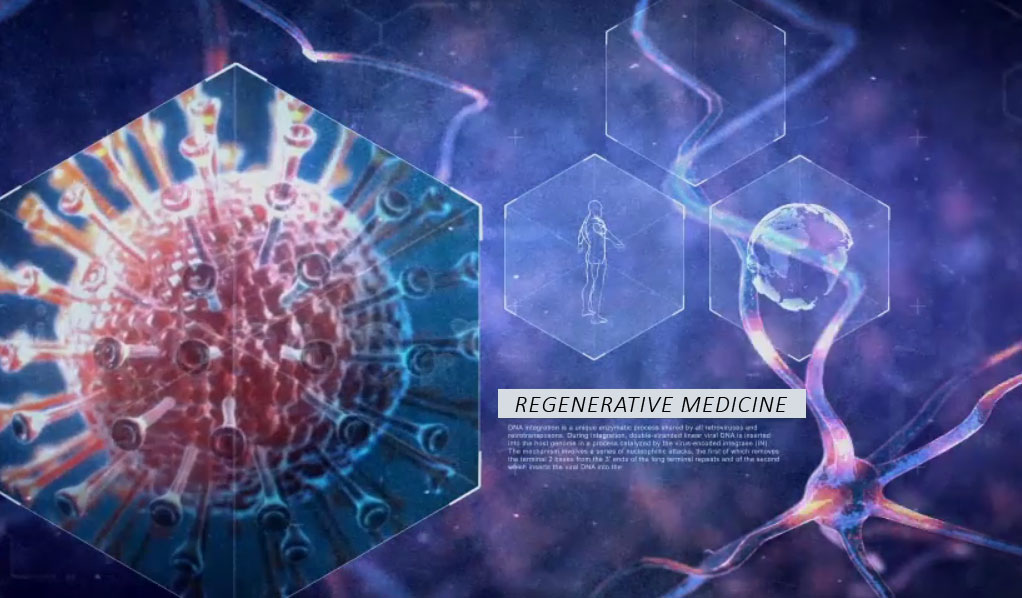How Stem Cells Function

Dr. Rena is a Board Certified Orthopedic Doctor
PRP Therapies and Stem Cell Therapies
tem cells have the capacity to migrate to injured tissues, a phenomenon called homing. This occurs by injury/disease signals that are released from the distressed cells/tissue. Once stem cells are delivered to a site of injury or deployed into the blood stream, they go to these distressed signals and dock onto adjacent cells to commence performing their job.
- They serve as a cell replacement where they change into the needed cell type, such as a muscle cell. This is ideal for traumatic injuries and orthopedic applications.
- They do not express specific HLAs which help them avoid the immune system. In fact, mesenchymal stem cells (MSCs) do this so well that they are in clinical studies for graft vs host disease and have been approved for pediatric graft vs host disease in Canada. These studies and data support the notion that the cells are safe to use as an “off the shelf” product.
- They dock on an adjacent cell and release proteins called growth factors, cytokines and chemokines.
These factors help control many aspects such as:
Regenerative medicine is the process of replacing, renewing or engineering human cells, tissues, organs, proteins, etc for the purposes of restoring function and homeostasis in the body. One of the key components of regenerative medicine is the use of cell replacement strategies which usually requires stem cells.
Stem Cells
These are undifferentiated cells in our bodies that have the capacity to change into any healthy cell in our body. Meaning they can change into skin, bone, heart, and muscle cells to name a few. They have the ability to replicate substantially as compared to normal somatic cells such as skin. Stem cells are located throughout our body in almost every organ and tissue such as bone marrow, fat, teeth, muscles, etc. However, as other cells in our body, stem cells also age as we do. That is why we use stem cells from umbilical cord which are young and healthy.
Our regenerative medicine product is derived from Umbilical Cord Donations. Our product contains mesenchymal stem cells (MSCs) and is rich in growth factors from umbilical cord blood. We obtain these tissues under informed consent and strict ethical protocols. The cord from where we extract our stem cells are from safe, reliable hospital sources via a non-invasive, simple, and painless procedure.
Here’s how it works:
Participating hospitals invite screened mothers expecting normal, healthy births to donate the resulting umbilical cord tissues. These otherwise discarded tissues are an excellent source of high-quality stem cells and growth factors which may be used in regenerative medicine. At the time of birth, a specialized nurse enters the delivery room to carry out the extraction procedures. The umbilical cord tissue and blood is extracted and taken to our lab which follows cGMP and GTP procedures. From here our regenerative medicine product is made.
All the tissues obtained are screened under FDA standards in order to assure the safest and highest quality product. Our regenerative medicine product is sold in standardized concentrations making it easy to deliver a dependable product.
We use only umbilical cord-derived regenerative medicine products. This causes no pain for the patient as there is no extraction or procedure required to obtain the stem cell based product. Moreover, the product contains no known proteins that can cause a rejection in the patient. Research has shown that umbilical cord-derived stem cells are not susceptible to malignant transformation in a serum-free medium, making them safe for therapeutic use in patients.
Our regenerative medicine product are produced in a cGMP lab that receives all cord tissue/blood donations from hospitals directly to the facility, which guarantees minimal handling and a lower risk of cell loss or contamination. Our regenerative medicine product is produced in compliance with FDA cGMP (Current Good Manufacturing Practice) and GTP (Good Tissue Practices) standards, which assures you the end user quality and safety in our product. Most importantly, our regenerative medicine product is minimally manipulated preserving its natural healing properties.
Our characterized product contains mesenchymal stem cells (MSCs). These are defined by the stem cell marker CD90. Moreover, they are negative for HLA-DR which helps lower the risk of any negative reactions to the product.
Key Components of Regenerative Medicine


Capabilities of Stem Cells
Stem cells are undifferentiated cells that have the capacity to change into any specific cell type in the body. These cells once deployed to an area of injury/disease can readily change into the cell type that is needed to be replaced. Moreover, stem cells home to sites of injury by cell signals that attract them to sites of injuries. Once they reach where they need to go, they dock and commence repairing the injury/disease by releasing cytokines, chemokines, and growth factors that aid in host endogenous repair.
There are greater than 200,000 peer reviewed scientific publications on pubmed, with thousands discussing positive outcomes following the use of stem cells. From stem cell therapies for heart disease to osteoarthritis to diabetes to name a few.
Research continues to show an increasing number of potential benefits from the trophic, immunomodulatory, anti-inflammatory and antimicrobial actions of stem cells.
